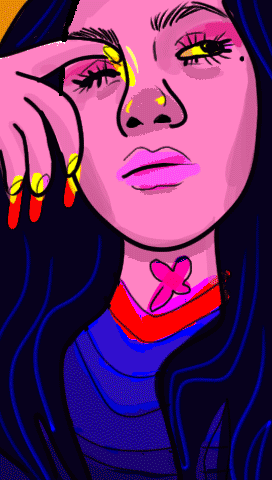View my 2020 teaching portfolio here

































I advocate for a more playful medium of technology. I approach play as a rigorous methodology and tool for research. One that supports a radical model of inclusion that serves to bring down access barriers; that invites students from all creatives disciples to experiment with digital fabrication, interaction, coding, moving image, and digital media; one that embraces all future thinkers, learners, and makers to become change-makers; and one that centers conditions of possibility where new ways of envisioning and reimagining our relationship to digital media and design take shape. I firmly believe in the medium’s capacity to promote alternative narratives, negotiate power, and cultivate identity construction.
I provide students with tools and applicable skills for making in the expanded field by centering hybridity, multidisciplinarity, and technology. Much of my research and practice revolves around fostering anti-racist, queer-centered inclusive spaces to explore tech-connected creative methodologies. For this reason, my pedagogy is steeped in the maker space, where the making communities I foster can take root. In the MakerSpace, I practice an everyday TransFeminism that takes the shape of techno-collaborative problem-solving. Without engagement, inclusive practices, and community first approaches, the maker space is just a room full of technology. The creative application of these technologies and their fusion into specific practices, interests, and identities activate its potential as a deep learning tool.
Through assignments and outside of class experiences, my students learn alternative ways of hypothesizing and planning that validate multiple ways of knowing and thinking. The majority of projects I assign to students utilize various tools and software to achieve the end goal of thinking beyond feasibility. Encouraging students to think beyond the functionality or “correct usage” allows students to cultivate a broader understanding of making where the role of creativity is to push boundaries and go beyond what we perceived as possible.
I believe that students should see professionals they identify with contributing in meaningful ways to the field of their choosing. Everyone in my class gets representation, period. To ensure equitable representation in my classroom, I deliver examples of work and voices of speakers/visiting artists from a broad spectrum of identity. I want my students to see themselves in the materials and artists we discuss in class because representation for each student matters. To this end, I also lean into my own identity as a trans, gender non-conforming person. I realize not all students will identify with my specific brand of queerness. However, my experiences with students have shown me that boldly showing up as your full self can open up a dialogue about intersectionality and create space for challenging conversations. By creating a welcoming, supportive, and inclusive environment for students, my goal is to break down the access barriers in students utilizing coding, digital fabrication, and digital media technologies for whatever creative enterprise aligns with their passion.
My course instruction provides students with focused technical training while leaving the students’ conceptualization up to the students. In this way, students have the opportunity to tell their stories through the use of creative technology. This approach lends an increased agency to students by encouraging exploring how one can contribute in a meaningful way.
Cultivating a diverse set of skills and interests in the classroom represents another significant influence on an individual student’s production. My technical instruction stems from the process of “making to learn” rather than “learning to make.” This approach allows students to jump into projects where they are not held back by their lack of skill or familiarity with a given medium.
My classroom is a place where students can leverage their failures as productive tools for problem-solving. The students I currently work with at Northeastern Illinois University represent a broad scope of experiences and backgrounds concerning accessibility to and practice with digital making tools. Rather than focusing on the lack of skills as a deficiency, I approach this as a positive classroom paradigm. This diversity in ability enriches the classroom experience by empowering them to share their strengths and weaknesses as learning tools for the entire class.
All of my above methods and strategies are thoughtfully employed to identify and accommodate the student’s personal creative development, in turn creating a space of care in which the student can grow through experimenting and making mistakes.